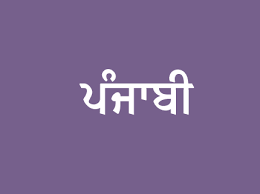Difference between revisions of "Language/Panjabi/Grammar/Pronouns"
m (Quick edit) |
m (Quick edit) |
||
| Line 70: | Line 70: | ||
<hr>If you have any questions, please ask them in the comments section below.<br>Feel free to edit this wiki page if you think it can be improved. 😎 | <hr>If you have any questions, please ask them in the comments section below.<br>Feel free to edit this wiki page if you think it can be improved. 😎 | ||
==Related Lessons== | |||
* [[Language/Panjabi/Grammar/Plural|Plural]] | |||
* [[Language/Panjabi/Grammar/Negation|Negation]] | |||
* [[Language/Panjabi/Grammar/Nouns|Nouns]] | |||
* [[Language/Panjabi/Grammar/Future-Tense|Future Tense]] | |||
* [[Language/Panjabi/Grammar/Questions|Questions]] | |||
* [[Language/Panjabi/Grammar/Gender|Gender]] | |||
* [[Language/Panjabi/Grammar/Conditional-Mood|Conditional Mood]] | |||
* [[Language/Panjabi/Grammar/Adjectives|Adjectives]] | |||
{{Panjabi-Page-Bottom}} | {{Panjabi-Page-Bottom}} | ||
Revision as of 23:04, 25 February 2023
Hi Panjabi learners! 😊
In today's lesson, we will be discussing pronouns in Panjabi. Pronouns are an important part of the language and can help you express yourself more clearly. We will look at the different types of pronouns, how to use them correctly, and some examples of how they are used in everyday speech.
Types of Pronouns
There are three main types of pronouns in Panjabi: personal, possessive, and demonstrative.
Personal Pronouns
Personal pronouns are used to refer to people or things. They include:
- mein (I)
- tu (you)
- oon (he/she/it)
- aan (we)
- tusi (you all)
- oonha (they)
These pronouns can be used in both singular and plural forms. For example, mein can be used to refer to one person (I), while aan can be used to refer to multiple people (we).
Possessive Pronouns
Possessive pronouns are used to show ownership or possession. They include:
- mera (my)
- tera (your)
- uska (his/her/its)
- hamara (our)
- apna (your all)
- unka (their)
These pronouns can also be used in both singular and plural forms. For example, mera can be used to refer to one person's possession (my), while hamara can be used to refer to multiple people's possessions (our).
Demonstrative Pronouns
Demonstrative pronouns are used to point out specific people or things. They include:
- yah (this)
- vah (that)
- yon (these)
- von (those)
These pronouns can also be used in both singular and plural forms. For example, yah can be used to refer to one thing (this), while yon can be used to refer to multiple things (these).
Using Pronouns
When using pronouns in Panjabi, it is important to remember that the gender of the pronoun must match the gender of the person or thing being referred to. For example, if you are referring to a female, you must use the pronoun oon (she).
It is also important to remember that the number of the pronoun must match the number of the person or thing being referred to. For example, if you are referring to multiple people, you must use the pronoun oonha (they).
Examples
Here are some examples of how pronouns are used in everyday speech:
- Mein ghar ja raha hoon. (I am going home.)
- Tu kya kar raha hai? (What are you doing?)
- Oon bahut acchi hai. (She is very good.)
- Aan yahan aaye hain. (We have come here.)
- Tusi kab ja rahe ho? (When are you all leaving?)
- Unka bahut saare bache hain. (They have many children.)
- Mera ghar yah hai. (This is my house.)
- Tera phone vah hai. (That is your phone.)
- Yon log bahut acche hain. (These people are very nice.)
- Von bachon ko school jaana hai. (Those children have to go to school.)
If you have any questions, please ask them in the comments section below.
Feel free to edit this wiki page if you think it can be improved. 😎
Related Lessons
